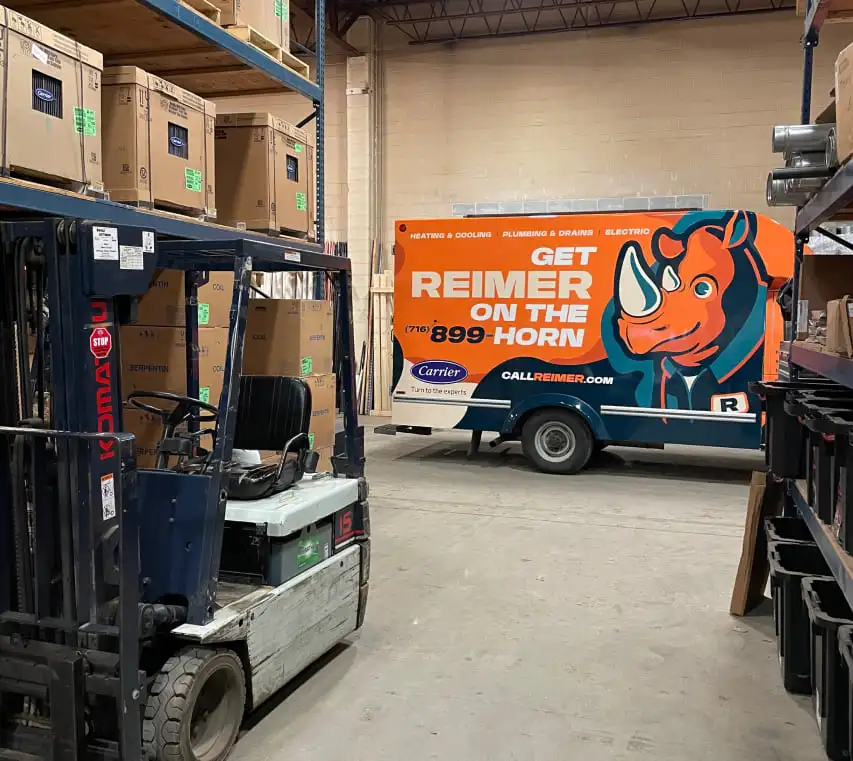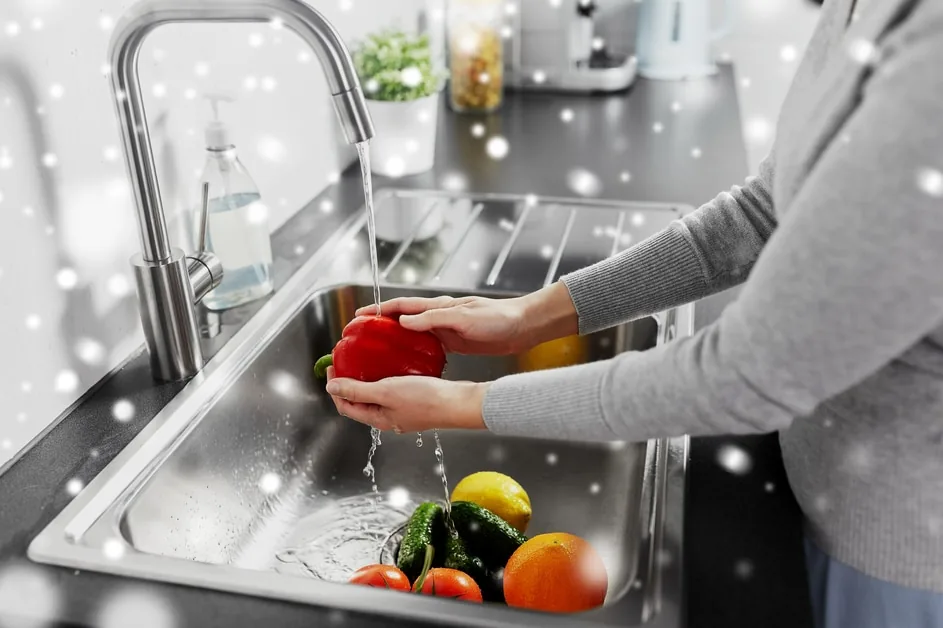Ugh, mold and mildew – the banes of every bathroom owner’s existence! We know what you’re thinking – “Why would I want to read about that gross stuff?” But stick with us here, folks. That funky fungus isn’t just an eyesore. If left to fester, it can seriously wreck your home’s structure and put your family’s health at risk. Especially those of us here in Western New York, where humid summers and freezing winters create the perfect damp breeding grounds for spores to spread.
Whether it’s that suspicious black growth creeping along your shower grout or a musty odor wafting from the linen closet, bathroom mildew is a problem no homeowner wants festering. That’s why getting ahead of moisture is so crucial. A little preventative effort goes a long way towards keeping your bathroom fresh and mold-free instead of a dank, spore-ridden cave.
Once you see how simple (and affordable!) it is to cut off mold before it gets a foothold, you’ll wonder why you didn’t make it a priority sooner. We’re talking easy habit tweaks and cheap solutions that’ll save you major headaches and remediation costs down the line. No more holding your breath or dowsing everything in bleach – let’s get that bathroom feeling clean, dry and healthy again!
Understand Why Mold and Mildew Thrive in Bathrooms
You want the real deal on why mold and mildew are such bathroom squatters? Well, buckle up, because these fungal pests are the houseguests from hell!
What Even are Mold and Mildew?
First off, let’s get introductions out of the way. Mold is that nasty fungus that grows in damp areas and comes in an ugly rainbow of colors – though black, green, and white are most common for bathrooms. Mildew is just mold’s flat, powdery-looking cousin. But don’t let the different looks fool you – they’re both equally crappy to have around.
Why They Love Bathrooms
Your bathroom is basically a mold and mildew paradise. Think about it – you’ve got crazy humidity from all those hot showers and baths. A lot of older houses in this area lack good venting too, so that moisture gets trapped inside with nowhere to escape. Throw in some nice warm temps that fungus loves, and you’ve got prime real estate for spores to shack up and multiply.
What Attracts Mold Growth
Speaking of moisture, the prime offenders are obviously showers and baths, with all that steam fogging up the room. However, even tiny drips from a faulty faucet, showerhead, or pipe can lead to damp spots that become a mold breeding ground over time.
And let’s not forget poor air flow! Most bathrooms are pretty humid, stuffy spaces to begin with – especially if you’ve got an old or nonexistent exhaust fan. That stale air is perfect for spores to get their groove on.
Ventilation: The Key to Preventing Mold and Mildew
Alright, let’s talk ventilation. This is your first line of defense against those mold-y bathroom squatters. This is the key to kicking moisture out before it can enable a fungal infestation.
Use Those Exhaust Fans!
Hopefully your bathroom is rocking an exhaust fan to start with. If not, get one ASAP – these devices suck out all the humid air after a steamy shower or bath. And really put that fan to work! Keep it running for at least 20-30 minutes after you’ve finished to clear out every last bit of moisture.
If your current one seems like it’s struggling, consider upgrading to a more powerful model that can really move some air.
Open Up Those Windows and Doors
Of course, nothing beats a little natural ventilation when the weather permits. Once you’ve finished your shower routine, crack those bathroom windows wide open to let the breeze do its thing. And keep interior doors open too when the bathroom’s not in use – it’ll help any trapped moisture escape and allow air to circulate better.
Dehumidifiers for Stubborn Cases
For real problem moisture areas with poor ventilation, you may need to bring in reinforcements. A small dehumidifier can be a game-changer for sucking excess humidity out of stuffy bathrooms, especially during our swampy Western New York summers.
Aim to keep your home’s humidity levels between 30-50% to make it inhospitable for mold growth.
Keep Bathroom Surfaces Dry
Mold LOVES moisture. That’s why you need to keep your bathroom surfaces dry as a bone!
Wipe Down Wet Surfaces After Use
Walls, tiles, sinks, tubs, countertops, etc. – anything that gets soaked during your shower routine! Give those areas a quick once-over with a towel or microfiber cloth to soak up any lingering moisture. Don’t skip this step thinking “eh, it’ll air dry.” That’s just rolling out the welcome mat for mildew growth.
For real stubborn wet spots like the shower walls, invest in a cheap little squeegee. Swiping your shower walls for a few seconds after each use will zap away that moisture before it can settle in and get comfy.
Fix Leaks Promptly
Water has a way of finding even the tiniest cracks and crevices to seep into. That’s why you need to fix any leaks right away! We’re talking dripping faucets, cracked grout lines, pipes with even the slightest drip, etc.
Don’t forget to check those hidden spots under sinks and behind toilets too. Those damp, dark spaces are mold’s favorite hangouts.
Regularly Clean and Dry Shower Curtains and Mats
Last but not least, your shower curtain/liner and bath mats deserve some tough love too. Think about it – those stay sopping wet after every use, creating a literal mold breeding ground.
Make sure to wash or replace curtains/liners regularly. As for mats, either hang them up to fully dry between uses or opt for machine-washable ones you can toss in the laundry.
The bottom line? Deny mold that cozy moisture it craves at every turn. With a little diligence about drying up wet spots, you can shut down fungal infestations before they even get started.
Use Mold-Resistant Materials
Okay, so you’re on top of the ventilation game and keeping wet surfaces dry as the desert. But you know what’ll really give mold and mildew the cold shoulder? Using materials specifically designed to resist their funky growth.
Mold-Resistant Paint
Yep, there’s actually special paint formulated with built-in mold inhibitors. A few coats of this stuff on your walls and ceilings creates an extra barrier against spores taking root, even in moisture-prone areas.
If you’re already battling some mildew stains, repainting with one of these mold-resistant formulas can help stop it from coming back with a vengeance.
Mold-Resistant Caulk and Grout
Caulk and grout are two of mold’s favorite hangouts since they stay damp for long periods after showers and baths. Make sure any gaps, joints or seams around your tub, shower or sinks are well-sealed with mold-resistant caulk or grout.
If the existing stuff is old and cracking, get in there and re-caulk those seams to eliminate water seepage.
Use Moisture-Resistant Building Materials
For a real mold-proof overhaul, you may want to consider using moisture-resistant materials next time you renovate the bathroom. We’re talking tile, stone, or those fancy water-resistant drywall options instead of regular drywall which gets ruined by moisture over time. Especially here in Western New York where our cold, damp winters mean houses stay buttoned up for months – those breathable materials make all the difference.
Clean Regularly to Prevent Mold and Mildew
Listen up, folks – even with all the ventilation tricks and mold-resistant materials in the world, good old-fashioned regular cleaning is still your best defense against funky bathroom growth.
Routine Bathroom Cleaning Schedule
We’re talking a full-on deep clean at least once a week, hitting all those moist, humid corners where nasties like to lurk. Don’t just give the obvious spots a quick wipe down either – really get in there and scrub every nook and cranny, including grout lines, shower curtains, under sinks, behind the toilet – anywhere moisture might be chillin’.
Use Mold-Killing Cleaners
When it comes to actually blasting away existing growth, you’ve got some options. For a natural approach, that good ol’ vinegar, hydrogen peroxide, and baking soda combo is surprisingly effective. But for real stubborn cases, you may want to bring in the big guns – specialized mold and mildew cleaner from the store.
And don’t forget, us Western New Yorkers have to deal with hard water stains and mineral buildup too, which just creates more spots for mold to grab onto. Using the right cleaning solutions helps break all that crusty gunk down.
Deep Clean Grout and Caulk
Speaking of grimy buildup, your grout lines and caulk seals need a little extra TLC. Grab a sturdy brush and get scrubbing with either a mold cleaner or a vinegar/baking soda paste. If the mold has really dug its heels in, you may just need to re-grout or re-caulk those areas to fully evict it.
Monitor and Maintain Bathroom Fixtures
Alright, so you’ve got the cleaning routine down pat and you’re using all the mold-kryptonite materials. But you know what else can undo all that hard work? Letting crappy plumbing and fixtures turn your bathroom into a moisture trap!
Check Plumbing for Leaks
We’re talking pipes, faucets, toilets – anything that involves running water. Give ’em a regular once-over to catch any drips, rust spots or damp areas forming. Those small leaks may seem harmless, but they create the perfect petri dish for mold to move in over time.
Ensure Proper Drainage
Speaking of water buildup, make sure your drains are doing their job too. Clogs lead to nasty standing water that mold loves to party in. Do yourself a favor and pick up some drain strainers to catch all that hair and gunk before it turns into a blockage. Nobody wants to be dealing with a backed-up tub when you’re trying to get clean!
Maintain Exhaust Fans
Last but not least, don’t forget about your exhaust fan friends! All that dust and debris can build up and clog them over time, reducing their moisture-clearing power. Give them a regular cleaning so they can keep working at peak efficiency.
And if yours has kicked the bucket, bite the bullet and replace it. A busted fan is just allowing all that humid air to hang out unchecked – a total mold breeding ground.
Addressing Mold Problems: When to Call a Professional
Okay, so you’re doing everything right – the ventilation is on point, you’re using mold-resistant materials, and your cleaning game is strong. But sometimes, that pesky fungus just won’t take a hint. If you find yourself dealing with a real stubborn mold sitch, it may be time to call in the professionals.
Recognizing Serious Mold Issues
If you’ve scrubbed, bleached, and dehumidified to no avail and that mold keeps coming back like an unwanted houseguest, chances are there’s an underlying issue you can’t see. Maybe it’s spread inside the walls, under flooring or behind tiles where your efforts can’t reach. Those are definite signs you’ve got a bigger infestation on your hands.
Health Concerns with Mold
Here’s the other thing – as much as mold is just plain gross to look at, that stuff can also seriously mess with your health too. We’re talking exacerbating allergies, asthma, other respiratory problems – especially for kids, elderly folks or those with compromised immune systems. Older homes around these Western New York parts can be particularly susceptible with outdated materials and poor ventilation.
When to Call a Professional Mold Remediation Service
If you’re dealing with large patches of growth that have spread to multiple rooms, trying to DIY that situation is just asking for trouble. Same goes if you suspect mold has infiltrated behind walls or other hidden areas you can’t easily access and treat. Those cases require some professional-grade mold remediation.
Banish Bathroom Mold Once and For All
We’ve given all mold-haters the full playbook for kicking that nasty fungus out of your bathroom for good. You’re now armed with all the ventilation know-how, mold-resistant materials, and cleaning strategies to starve moisture and shut mold down.
But even with all those tricks up your sleeve, sometimes you just need to call in professional reinforcements. If that mildew keeps rearing its ugly head no matter what you try, get the pros at Reimer on the case.
One call to (716) 272-2371 and our mold remediation experts will locate and eliminate even the most stubborn infestations. Your health and home deserve better than dealing with that gross junk. Put these tips into action ASAP and finally enjoy the fresh, healthy bathroom oasis you deserve!





